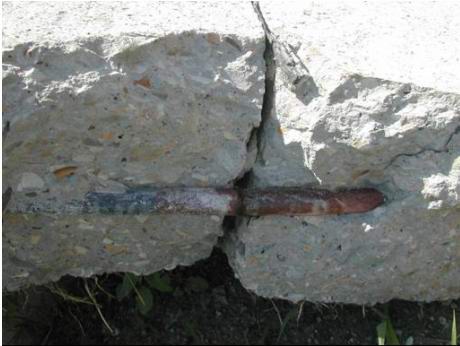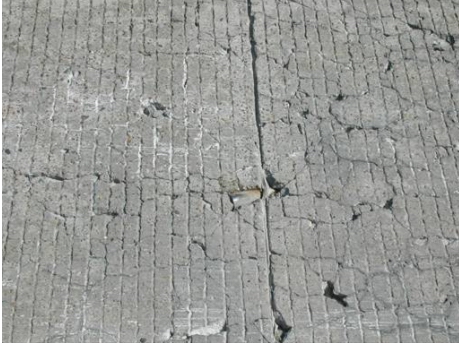In PCC pavements, joints are provided to accommodate concrete volume changes due to temperature and moisture variations. Additionally, transverse construction joints are installed as a terminus following the end of production or abutment to existing pavement. In concrete pavement contraction design (CPCD), both transverse and longitudinal joints are used. Only longitudinal joints are used in CRCP except for expansion joints at the bridge approaches and transverse construction joints. These joints relieve stresses in concrete, thereby preventing or minimizing the potential for uncontrolled cracks. The concrete movement at the joints could be substantial, and joint sealants are provided to seal and protect the joints from the infiltration of water and incompressible foreign materials.
Joints are one of the weakest areas in PCC pavement. There is a discontinuity in concrete at saw cut joints and wheel loads are not transferred 100 % from one slab to the next, resulting in higher wheel load stress. When incompressible materials get into the joints, expansion of concrete slabs due to high ambient temperatures will squeeze the incompressible materials and high localized stresses will develop in the concrete. Localized high concrete stresses can cause spalling in the joints. Also, if a good joint seal is not maintained, water and de-icing compounds can get into the joint and cause corrosion problems in dowel bars as shown in Figure 1.

At the transverse joints in CPCD, dowel bars are used to improve load transfer efficiency (LTE) over simple aggregate interlock. The higher the LTE, the lower the wheel load stress, and the better the pavement performance. For dowel bars to perform as they are intended, their alignment should be parallel to the direction of concrete movement, both horizontally and vertically. If dowel bars are mis-aligned, high stress concentration and cracking will result in the concrete slab. Figure 2 illustrates a mis-aligned dowel bar.

Pavement distresses that require joint repairs
In CPCD any cracking, breaking, or spalling of slab edges on either side of transverse joints need to be repaired. The repair can be FDR or PDR, depending on the extent of the breaking or spalling. If the distress extends through the depth of the slab or hinders the ability of dowel bars to transfer load, FDR is required.
In CRCP, failures in transverse construction joints require joint repairs. Additional longitudinal steel is used at the transverse construction joints to accommodate large concrete stresses, which requires special attention for proper concrete consolidation under the longitudinal steel. If proper consolidation is not provided at these transverse joints, delamination and distress can result as shown in Figure 3. Any repair of the transverse construction joints requires FDR.

In establishing boundaries of joint repairs in CPCD, if the patch boundary falls within 6-ft of an existing undoweled transverse joint that does not require repair, extend the patch to the transverse joint. If the boundary falls on an existing doweled transverse joint, and the other side of the joint does not require repair, extend the patch beyond the transverse joint by about 1-ft to remove the existing dowels.
Load transfer devices
For joint repair in CPCD, dowels need to be provided at transverse joints and tie bars at longitudinal joints. For CRCP construction joint repair, tie bars need to be provided.
References
Original article content and pictures contributed by TxDOT.
